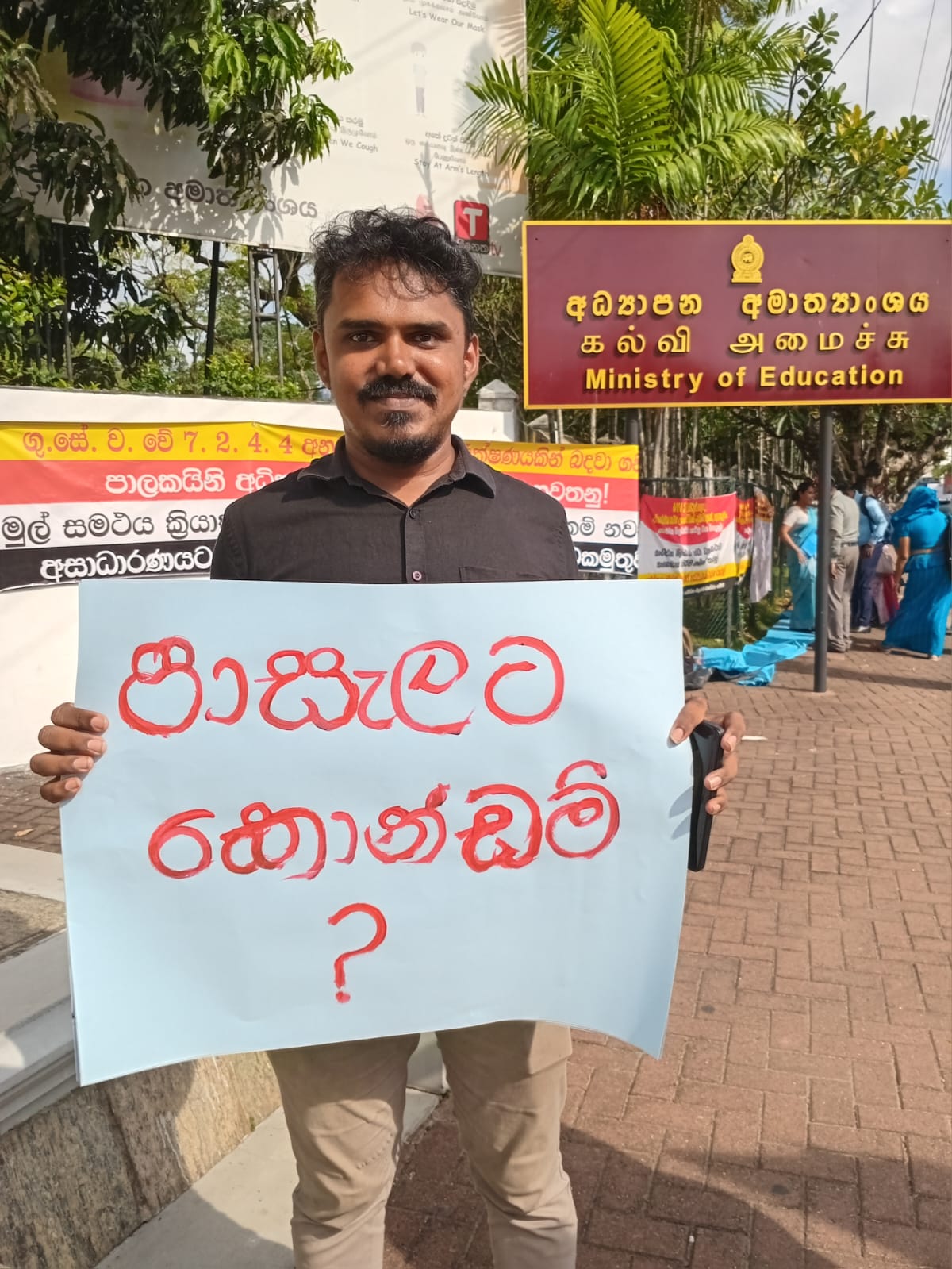Gateway opens to new economic giant
T. K. Premadasa
The historical visit of Xi Jinping, President of the People’s Republic of China on September 16, 2014 marks a new milestone in further strengthening Sri Lanka-China strong relationship maintained over centuries ago. His visit becomes historical because it is a visit of the Chinese leadership after 30 years. The last visit of a Chinese leader was Li Xiannian in 1986.
The current visit is very important at a peak time Sri Lanka and China have strengthened a strong relationship in political, cultural, trade and investment fields.
Sri Lankan President, Mahinda Rajapakshe made several visits to China on the invitation of Chinese leaders and had cordial discussions on cooperation and diplomatic relations.
These visits are considered highly prominent since they took place at historical moments as on the occasion of the 50th Anniversary of Diplomatic Relations between Sri Lanka and China.
The historic visit of the then Prime Minister of China Chou en Lai to Sri Lanka in early 1957 immediate after the establishment of MEP  Government in 1956 under the leadership of S.W.R.D. Bandaranayke, led to arrive at a decision to open diplomatic relationship between the two countries. This was the foundation cemented in the establishment of this long standing relationship.
Government in 1956 under the leadership of S.W.R.D. Bandaranayke, led to arrive at a decision to open diplomatic relationship between the two countries. This was the foundation cemented in the establishment of this long standing relationship.
Highlights from a number of Chronicles and Archaeological findings are acceptable proof of evidence that trade between Sri Lanka & China goes far beyond Christian era.
The fundamental achievement on trade negotiations in the recent past was the famous Rice Rubber Pact with China known as Sri Lanka China Trade Agreement signed in 1952 enhancing trade and mutual relations. China provided rice to Sri Lanka offering very attractive price 1/3 of the world market price at a difficult period of rice production in Asia due to Second World War.
Sri Lanka was able to recover the lost market share of natural rubber after Korean War as she was offered at a highly competitive price 40% higher than the price offered by the Western countries under this agreement. Primarily it was agreed on a short- term basis but on negotiations it was later consensually extended to a long-term trade agreement till 1982.
Time to time, both countries entered various agreements with regard to the trade and commerce such as Maritime Agreement in 1963, Sino-Lanka Joint Trade Committee in 1982, Sino-Lanka Economic and Trade Cooperation Committee in 1984 and Sri Lanka-China Business Cooperation Council in 1994.
China and Sri Lanka are relatively important to each other in the context of present socio economic scenario. Hence, it is vital to look in to the factors why both countries essential to each other.
Up to 1978 China was the Sri Lanka’s number one export market due to the 1951 Rubber Rice Pact. But today China is the 18th export market for Sri Lanka. However it gives different picture on imports from China as it became to number one importer of Sri Lanka.
One of the key subjects in the agenda for discussion between the two leaders will be the proposed Sri Lanka-China Free Trade Agreement (FTA).If both countries make this FTA a reality, it will be the most significant milestone of Sri Lanka China trade relationship since Sri Lanka China Rubber Rice Pact signed in 1952.
The Chinese Government has positively taken initiative steps to include proposed FTA with Sri Lanka in to the consideration list of Chinese FTAs from August.
At this moment, it is important appositely to expedite negotiations aiming for constructive achievement. Also it is advisable to make an attempt to enter into notified list of WTO list as it would help accelerate the negotiations.
Implementation of FTA generally takes a long period of time. Continuation of negotiations still with Iceland initiated in 2006 with 10 major sessions already held is the best example. On the other hand China gives it priorities to China – India Regional Trade Arrangement Study and China – Japan- Korea Joint Study as the total trade among these four countries covers nearly US$ 1000 billion.
In view of the above facts it is important for Sri Lanka to make every effort strengthening its relationship with China to expedite implementation of FTA at the earliest. The discussions of two leaders and also the forum between with business communities of two countries will make possible path to accelerate the implementations.
As far as Sri Lanka exports are concerned China is the 18th largest export market for Sri Lanka with exports of US$ 121 million in 2013 just 1% of total exports of Sri Lanka and with US$ three billion Chinese imports to Sri Lanka equals number one importer India. This shows that there is huge unfavorable trade balance between two countries.
Sri Lanka should consider that she will open the doors to a giant of world economy with implementation of FTA. Therefore negotiations should be benefited to both countries equally. The favorable positive list of products from Sri Lanka may include the large number of products in the proposed FTA, but the issue is whether Sri Lanka has the capability to supply all the products.
As a matter of fact, China has capability to supply any volume of products. Even the product list of present exports to China nearly 30 products, only apparel (US$ 22 mn), tea (US$ 20 mn) fiber (US$ 22mn) Tobacco (US$ 7 mn) and Rubber (US$ 6mn) as the five major products covers nearly 75% of total exports to China. Mineral sands, activated carbon, footwear, frozen fish, diamond, spices woven fabrics are listed as other key exports, but the each product export value is less than US$ 3 million.
The list of imported products from China covers over 300 products. China’s largest imports to Sri Lanka in 2013 were woven fabric (US$ 596 mn), electrical items (US$ 435mn), telephone video equipments (US$ 250mn) base metal products (US$200 mn) fertilizer (US$97Mn) automatic data processing machines (US$ 97 mn), boat building ( US$ 81 mn).
The most viable advantage to have FTA with China is that it provides huge opportunity to enter the world largest market in very competitive manner. China also gets more opportunities to enter Sri Lankan Market.
But Sri Lanka has to do a lot of home work to turn the proposed FTA in favor Sri Lanka by applying correct promotional strategies, innovative productivity to promote existing Sri Lankan products and introduce new products to Chinese market.
A section of the business community opines that negotiations in Chinese currency under this agreement will help reduce the commission charges on transactions.
Sri Lanka should invite more investors to invest export oriented projects in Sri Lanka to get the real benefits from this nature of agreements. On the other hand Sri Lanka should be vigilant if Sri Lanka gets all benefits of investment specially employment opportunities for Sri Lanka and absorbing new technology.
It is highly believed that recent trend of negotiations with China is most likely to reach fruition on investment in Sri Lanka. General public is also aware of the enthusiastic approach taken by the two governments in this respect. But more information of figures on developing status is not available.
However China is the leading giant involved in construction work in major areas like port development etc. Visit of the Chinese leader under the current environment is considered highly favorable for Chinese investment.
The resent increase of Chinese tourists visiting Sri Lanka has revolutionized Sri Lankan Tourist Sector. Arrival of Chinese tourists has considerably elevated compared to records of the recent past. According to the Tourist Board Chinese arrivals have increased by a mammoth 143.5% for 2014.
Even if the Sports Sector does not come under Economic Sector, it is the perception that Sri Lanka can gain an invaluable experience in sports from Chinese expertise. They have elevated to the apex in sports within a very short period.
The writer has written an article under the headings “Courageous China – An Example of Commitment” on the Chinese achievements at Olympic Games. Sri Lanka should utilize this leaders’ forum to share Chinese experience for development of sports in Sri Lanka.
 (The writer is the retired former Head of Corporate Affairs and Communications- Sri Lanka Export Development Board and Ex-Director of Sri Lanka Trade Centre in Maldives.
(The writer is the retired former Head of Corporate Affairs and Communications- Sri Lanka Export Development Board and Ex-Director of Sri Lanka Trade Centre in Maldives. 965 Viewers









